I’m merely giving color back to the world, coming close to reality.
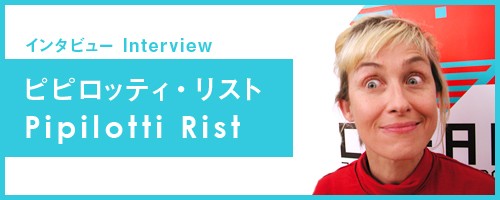
With her technicolor palette, nimble camerawork, and freewheeling presentation style, the eternally tomboyish Pipilotti Rist reflects the joys and uncertainties of living in today’s world. We spoke to the artist – appearing at the International Festival for Arts and Media Yokohama (CREAM) for the Asian premiere of her first full-length feature Pepperminta – about what inspired this first foray into film, and the messages in her work.
Interview: ART iT
Pepperminta Trailer
– Pepperminta is an 80-minute film. It’s your world, yet different to your video installation work. What motivated you to make a feature-length movie?
I wanted to develop dramaturgical and formal questions. I also wanted to see if I could reach people who normally don’t engage with fine art. Viewing art and cinema are different rituals. They attract different audiences. I’m also very interested in the moment when the film gets broadcast on TV, because then it will become an installation – having it on all the TVs in people’s living rooms is like the biggest video installation in the world!
– Do you also view people sitting in a theatre quietly in their seats as a form of installation?
Yes, absolutely.
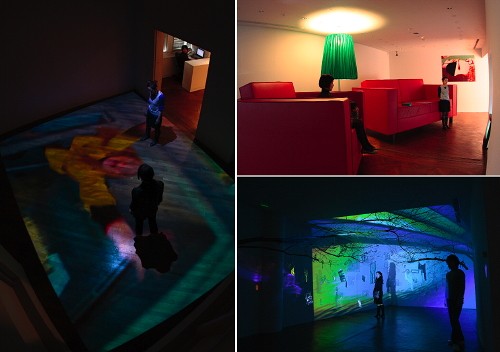
Installation view of Pipilotti Rist: Karakara at the Hara Museum of Contemporary Art (11.17.2007–2.11.2008)
Clockwise from left: À la belle étoile (Under The Sky) 2007 audio/video installation
Das Zimmer (The Room) 1994/2007 audio/video installation
Apple Tree Innocent On Diamond Hill (Apfelbaum unschuldig auf dem Diamantenhügel) 2003 video installation
Photos Yonekura Hirotaka Courtesy the artist, HAUSER & WIRTH ZÜRICH and Hara Museum of Contemporary Art
– But the format is really more traditional. Your video-installation work to date has taken the form of monumental multimedia projections, or a small hole in the floor…
Or just relaxing and looking up, or changing shapes… I agree. I took one step back in history. I didn’t progress; I regressed. But I like to make my life difficult. This was really the wrong time to try to do this kind of movie, because people go to the movies less and less and when they do go, they prefer to go to something familiar, where they know what to expect.
– You reconstructed footage from Pepperminta for your show at MoMA…
Behind the Scenes with Pipilotti Rist, Pour Your Body Out (7354 Cubic Meters), MoMA
I arranged a buyout with the producer that allows me to use footage for three installations. Normally as a video artist I can’t afford to work with a big, professional crew. This was one of the reasons why I wanted to do a film. And it was a very good experience for me to work with people who are dedicated to that thing they do – much like musicians in an orchestra. As I video artist I usually work alone, or sometimes together with two, three, maybe four people. Like this week, I shot footage in Itako (Ibaraki) in the rice fields for a forthcoming project with a crew of just two people: Davide Legittimo, the visual effects supervisor on Pepperminta, doing the technical and me doing the camerawork.
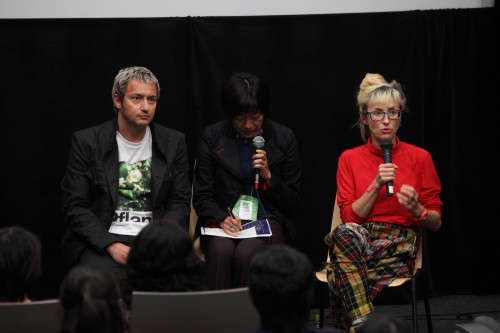
Davide Legittimo and Rist fielding a question from none other than Alfredo Jarr (!) who was also
in town for CREAM and caught the screening of Pepperminta on opening day. Photo Kioku Keizo
– How many people were involved in the making of Pepperminta?
Depending on the scene, the crew ranged from 12 people up to 25 people. In total there were of course hundreds involved, but most came to do something specific and then left; only a few stayed for the whole process. And after the shooting was finished, I worked with other people. There’s a much greater division of labor than with video art.
The message lies in the colors and contradiction
– To me Pepperminta is a story of resistance against the world and at same time a celebration of it. Pepperminta’s extraordinary innocence makes her want to change the world and people around her, which results in conflict, but at the same time she harbors no hate; she loves even her enemies.
I made some things exaggerated, and some more simple, to make it like a fairy tale. So it’s more symbolic. But the message is not only in the story; it’s also in the texture, the camerawork, the material, the colors, and in the way of looking. The contradiction you felt is addressing our fears and our censorship in life. Thinking, for example, that we should not love certain people because of what we think they think of us. And while I know we need certain kinds of fears to live together in society, I would like to provoke discussion about which fears are necessary and which we should overcome. Often we have rules in our lives that seem to be givens, but this is not true; everything is constructed. So I tried with this film to question things. But I am also caught in myself. I’m not freer than anybody else.
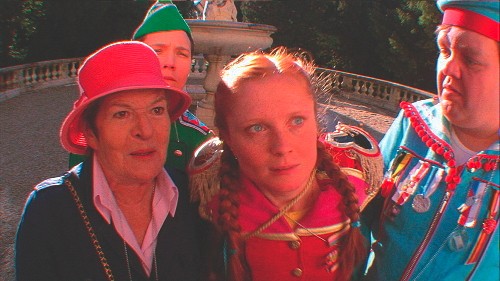
From Pepperminta
– Besides Pepperminta, might some of the other characters in the film – like her grandmother who you’ve depicted as a single eyeball or her allergic, reclusive male companion – be your alter egos?
Yes, I’m more the grandmother (laughs); they’re both my alter egos. But I realized too late that the name Pepperminta is too close to my own name, both coming from Astrid Lindgren. Pepperminta is unfortunately not my alter ego; I’m more complicated, more hysterical, than she is.
– Your use of vivid colors is impressive in all your works, as it is in this film. In setting out to develop a ‘miracle weapon’ for her fight, Pepperminta also researches ‘miracle colors’. Is there some kind of message in these colors?
It’s a form of political research questioning what is valued more, and why we have ‘chromophobia’? In European society, and in Japanese society, form and line are more highly valued than color. Form, line, black and white and writing are the spirit, the intellectual, the rational, and color is something like music, which is formless. You can fall into that formlessness, it’s dangerous, it’s subconscious, it’s associated with the exotic, the proletariat and today, it’s a tool for advertising. When we want to appear deep and intellectual, we try not to use too much color. I wanted to speak about this, about the way we hide behind the black and white.
Reality is in the palm of your hand
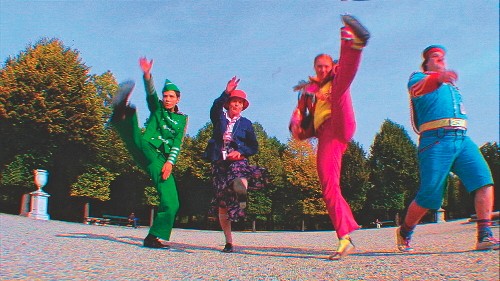
From Pepperminta
– I also sensed that the values of the colors in the movie symbolized the values of the individuals…
You’re right, it has a lot to do with individuality. Because inside we are extremely colorful. When we close our eyes after looking at light the afterburn is very colorful. Our subconscious is very colorful.
When video was invented – in American and Japan – they took some of the color away to prevent our skin from looking green. If video had been invented in Africa, it would have looked different. So when we see a photo, we are already used to seeing a bit less color than in reality. I’m merely giving color back to the world, coming close to reality; I don’t go beyond.
– You use very artificial techniques in the film to create reality or rather super reality. What were you trying to achieve in terms of the feeling of reality?
The film was shot with high-definition video and rapid-shot still photography. We shot 50 frames per second to have enough information to create smooth slow motion, so that once the sound is added, you don’t think it’s slow motion; you think it’s real time. It took more than one year for the post-production. You might call it technical or cold, but I tried to make it very warm, to make it as close to our organic substance as possible. So the red, green, blue is just a copy of the human optics. A bad copy, maybe. But I don’t think there is only one reality; there are many realities. It’s just a matter of what we focus on.
Pipilotti Rist
Born 1962 in Grabs, Switzerland. Has produced video installations since the 1980s and presented them at major art museums and international exhibitions worldwide. Winner of the Premio 2000 award for outstanding achievement by a young artist at the 1997 Venice Biennale. In Japan, she mounted a solo show, Pipilotti Rist: Karakara, at the Hara Museum of Contemporary Art (2007-08) and her first feature-length film Pepperminta made its Asian premiere at the CREAM: International Festival for Arts and Media Yokohama.
http://www.pipilottirist.net/
